Detection of Aphid-Infested Mustard Crop Using Ground Spectroscopy
Abstract
:1. Introduction
2. Materials and Methods
2.1. Investigation Site
2.2. Ground Data
2.2.1. Spectroradiometer Measurements
2.2.2. Crop Variables
2.2.3. Measurement of the Aphid Infestation Severity Grade (AISG)
2.3. Data Processing
2.3.1. Laboratory Analysis
2.3.2. Hyperspectral Data Processing
2.4. Methodology
2.4.1. Spectral Feature Selection
- Sensitivity of AISG for measured reflectance and derivates. The hyperspectral reflectance data were reduced to 400–1100 nm by removing the wavelength at edges that caused noise. The derivative of the reflectance spectra was calculated by using the method of SG [38] and smoothing with a nine nm moving window. The correlation between AISGs and reflectance and derivative at each spectral band from 400–1100 nm were studied with the Spearman’s rank method. The sensitive spectral regions to discriminate healthy and infested aphid crops were identified based on corresponding reflectance, 1st, and 2nd derivative values, and their correlation with AISG at a level of 99% significance.
- PCA and PLSR analyses for sensitivity of AISG: Principal Component Analysis (PCA) is a multivariate statistical method to find a pinpoint picture of multivariate data. Orthogonal transformation by PCA outcomes in less independent variables with the maximum representation of the original variables [39]. The hyperspectral reflectance data extracted from 600 samples of healthy and various AISGs of affected mustard crops were studied using PCA with the full cross-validation method. PCA was directly employed on the selected wavelength 400–1100 nm to generate the PCs. Each PC is a linear summation of the original sample at individual wavelength multiplied by the corresponding (spectral) weighting coefficient [40]. While multivariate analysis method can occasionally be employed directly to continuous spectral data, the calibration process of this method is often time-consuming [41]. Loading results from PCA (weight coefficient) can be used to select the key variables responsible for the specific feature appearing in the respective scores. To remove redundant spectral bands for understanding hyperspectral data in potential online inspection, few spectral bands were identified. Pursuant to the previous study, spectral bands may be similarly or more effective than the entire spectral range [42,43]. The reduced number of spectral bands is sufficient to characterize most of the classification tasks [44]. Therefore, a number of bands with low (local minimum) and high (local maxima) weighing coefficients from PC loadings were carefully chosen as optimal spectral bands [45]. Furthermore, these spectral bands were then chosen as the dominant spectral bands to represent the most significant difference and loading weight for discrimination of different AISGs mustard crops.
2.4.2. Generation of Spectral Indices
2.4.3. Multivariate and Multidimensional Statistical Method
3. Results
3.1. Characterization of Hyperspectral Signature for Mustard Crop
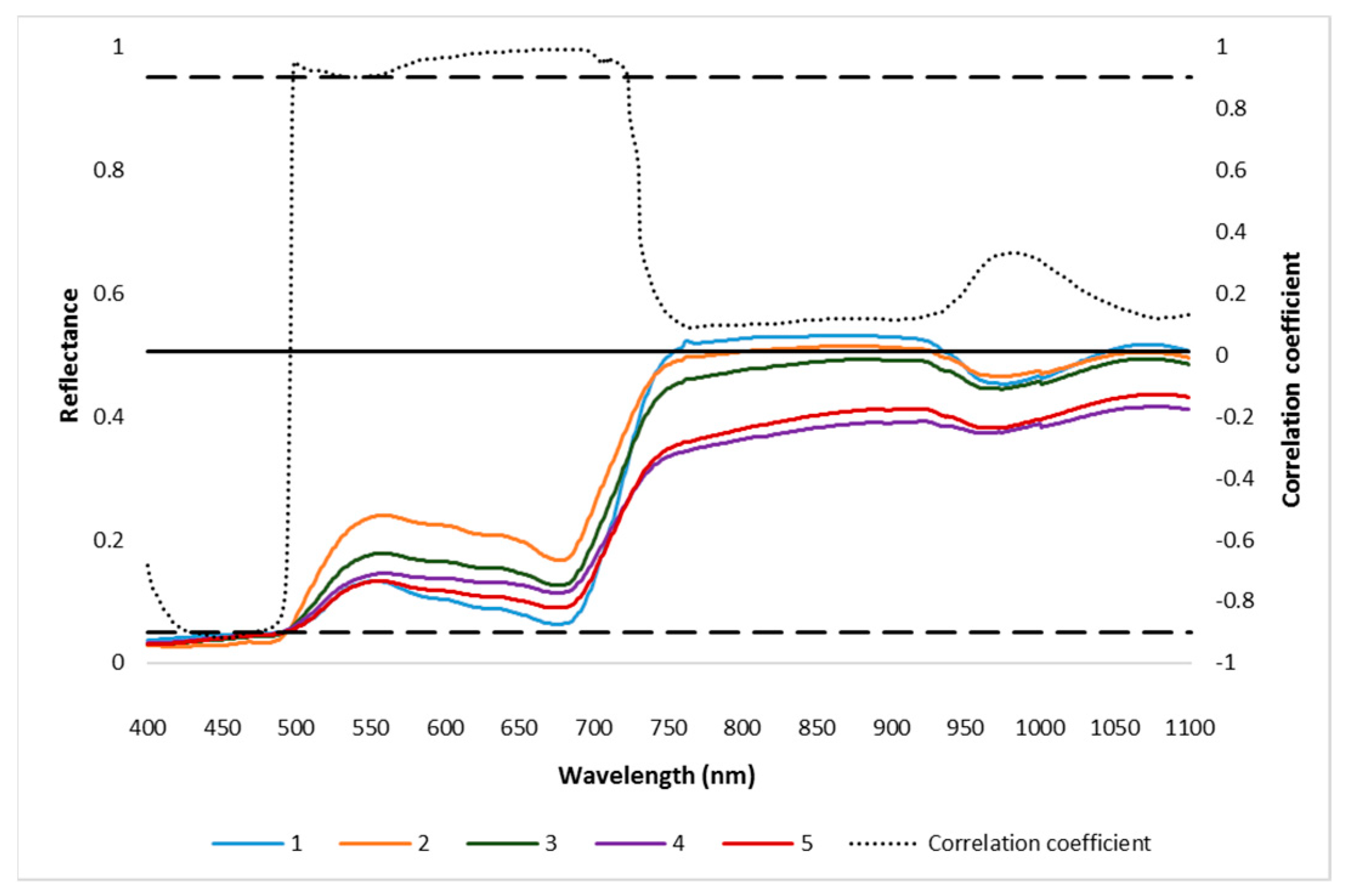
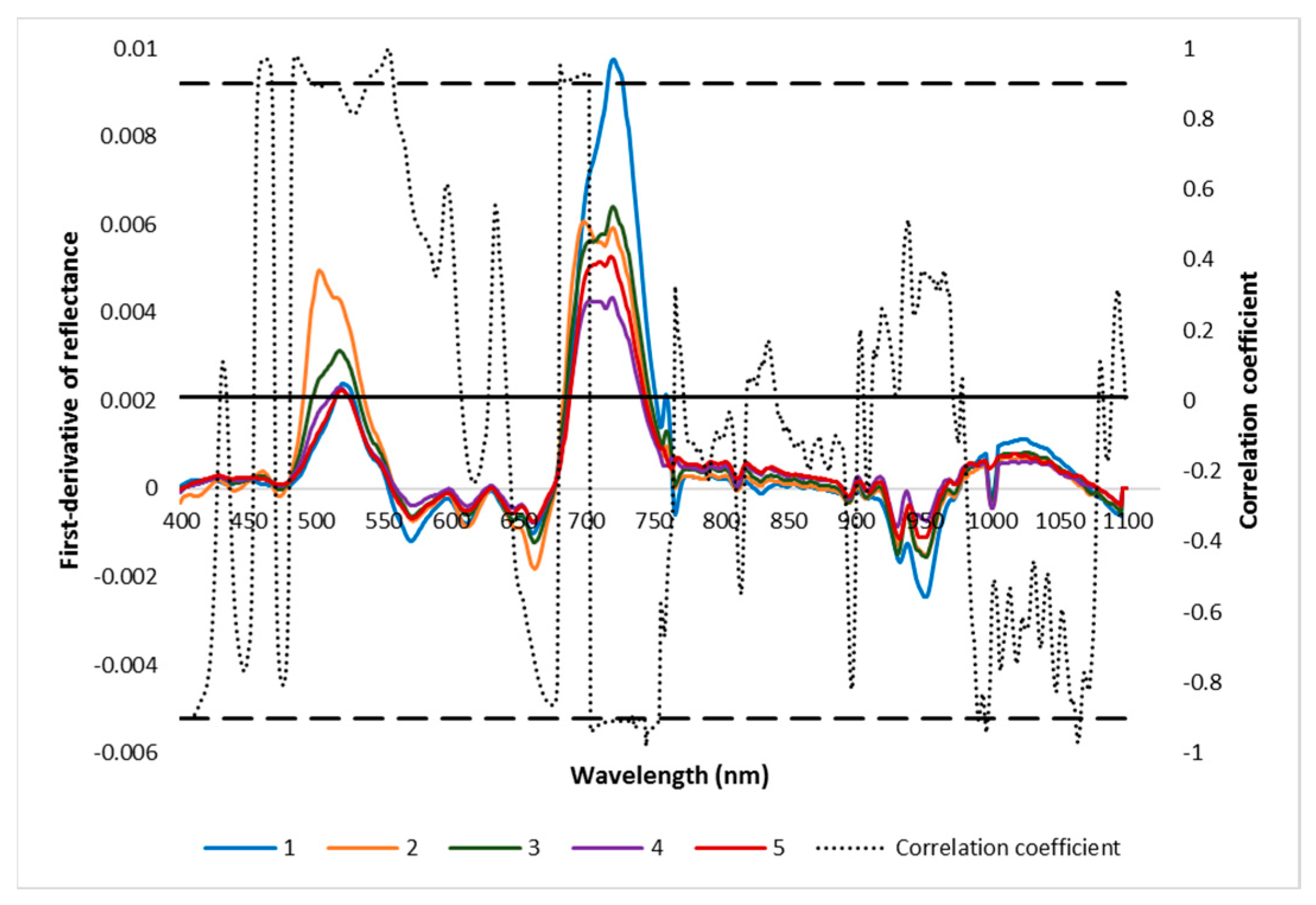
3.2. Biochemical Analysis of Mustard Crop
3.3. Sensitive Spectral Regions and Bands for AISG
3.4. Regression Model
3.5. PCR for Detection of AISG of Mustard Crop
3.6. PLSR for ASIG of Mustard Crop
4. Discussion
5. Conclusions
Author Contributions
Funding
Data Availability Statement
Acknowledgments
Conflicts of Interest
References
- DAC. Directorate of Economics and Statistics, Department of Agriculture and Corporation. 2015. Available online: https://eands.dacnet.nic.in/ (accessed on 15 May 2022).
- Kumar, D.; Kalita, P. Reducing Postharvest Losses during Storage of Grain Crops to Strengthen Food Security in Developing Countries. Foods 2017, 6, 8. [Google Scholar] [CrossRef] [PubMed]
- Jeger, M.; Beresford, R.; Bock, C. Global challenges facing plant pathology: Multidisciplinary approaches to meet the food security and environmental challenges in the mid-twenty-first century. CABI Agric. Biosci. 2021, 2, 20. [Google Scholar] [CrossRef]
- West, J.S.; Bravo, C.; Oberit, R.; Lemaire, D.; Moshou, D.; McCartney, H.A. The potential of optical canopy measurement for targeted control of field crop diseases. Annu. Rev. Phytopathol. 2003, 41, 593–614. [Google Scholar] [CrossRef] [PubMed]
- Government of India, Ministry of Agriculture. 2019–2020. Available online: https://www.sopa.org/india-oilseeds-area-production-and-productivity (accessed on 15 May 2022).
- FAO (Food and Agriculture Organization). FAOSTAT, Crop and Livestock Products, United Nations. 2022. Available online: https://www.fao.org/faostat/en/#data/QCL (accessed on 14 March 2022).
- Patel, S.R.; Awasthi, A.K.; Tomar, R.K.S. Assessment of yield losses in mustard (Brassica juncea L.) due to mustard aphid (Lipaphis erysimi Kalt.) under different thermal environments in eastern central India. Appl. Ecol. Environ. Res. 2004, 2, 1–15. [Google Scholar] [CrossRef]
- Shylesha, A.N.; Thakur, A.N.S.; Pathak, K.A.; Rao, K.R.; Saikia, K.; Surose, S.; Kodandaram, N.H.; Kalaishekar, A. Integrated Management of Insect Pest of Crops in North Eastern Hill Region; Technical Bulletin No. 19; ICAR RC for NEH Region: Umiam, Meghalaya, India, 2006; Volume 50. [Google Scholar]
- Kular, J.S.; Kumar, S. Quantification of avoidable yield losses in oilseed Brassica caused by insect pests. J. Plant Prot. Res. 2011, 51, 38–43. [Google Scholar] [CrossRef]
- Raikes, C.; Burpee, L.L. Use of multispectral radiometry for assessment of Rhizoctonia blight in creeping bentgrass. Phytopathology 1998, 88, 446–449. [Google Scholar] [CrossRef] [PubMed]
- Singh, P.; Sinhal, V.K. Effect of Aphid infestation on the Biochemical Constituents of Mustard (Brassica juncea) plant. J. Phytol. 2011, 3, 28–33. [Google Scholar]
- Terentev, A.; Dolzhenko, V.; Fedotov, A.; Eremenko, D. Current state of hyperspectral remote sensing for early plant disease detection: A review. Sensors 2022, 22, 757. [Google Scholar] [CrossRef]
- Kumar, A.; Bhattacharya, B.K.; Kumar, V.; Jain, A.K.; Mishra, A.K.; Chattopadhyay, C. Epidemiology and forecasting of insect-pests and diseases for value-added agro-advisory. Mausam 2016, 67, 267–276. [Google Scholar] [CrossRef]
- Jackson, H.R.; Wallen, V.R. Microdensitometer measurements of sequential aerial photographs of field beans infected with bacterial blight. Phytopathology 1975, 65, 961–968. [Google Scholar] [CrossRef]
- Colwell, R.N. Determining the prevalence of certain cereal diseases by means of aerial photography. Hilgardia 1956, 26, 223–286. [Google Scholar] [CrossRef]
- Jackson, R.D. Remote sensing of biotic and abiotic plant stress. Annu. Rev. Phytopathol. 1986, 24, 265–287. [Google Scholar] [CrossRef]
- Nilsson, H.E. Remote sensing and image analysis in plant pathology. Annu. Rev. Phytopathol. 1995, 33, 489–527. [Google Scholar] [CrossRef] [PubMed]
- Mirik, M.; Michels, G.J., Jr.; Kassymzhanova-Mirik, S.; Elliott, N.C. Reflectance characteristics of Russian wheat aphid (Hemiptera: Aphididae) stress and abundance in winter wheat. Comput. Electron. Agric. 2007, 57, 123–134. [Google Scholar] [CrossRef]
- Mirik, M.; Michels, G.J., Jr.; Kassymzhanova-Mirik, S.; Elliott, N.C.; Catana, V.; Jones, D.B.; Bowling, R. Using digital image analysis and spectral reflectance data to quantify damage by greenbug (Hemitera: Aphididae) in winter wheat. Comput. Electron. Agric. 2006, 51, 86–98. [Google Scholar] [CrossRef]
- Huang, J.F.; Apan, A. Detection of sclerotinia rot disease on celery using hyperspectral data and partial least squares regression. J. Spat. Sci. 2006, 52, 129–142. [Google Scholar] [CrossRef]
- Govender, M.; Chetty, K.; Bulcock, H. A review of hyperspectral remote sensing and its application in vegetation and water resource studies. Water Sci. 2007, 33, 145–152. [Google Scholar] [CrossRef]
- Singh, D.; Sao, R.; Singh, K.P. A remote sensing assessment of pest infestation on sorghum. Adv. Space Res. 2007, 39, 155–163. [Google Scholar] [CrossRef]
- Card, D.H.; Peterson, D.L.; Matson, P.A. Prediction of leaf chemistry by the use of visible and near infrared reflectance spectroscopy. Remote Sens. Environ. 1988, 26, 123–147. [Google Scholar] [CrossRef]
- Yoder, B.J.; Pettigrew-Crosby, R.E. Predicting nitrogen and chlorophyll content and concentrations from reflectance spectra (400~2500 nm) at leaf and canopy scales. Remote Sens. Environ. 1995, 53, 199–211. [Google Scholar] [CrossRef]
- Liu, Z.-Y.; Huang, J.F.; Shi, J.J.; Tao, R.X.; Zhou, W.; Zhang, L.L. Characterizing and estimating rice brown spot disease severity using stepwise regression, principal component regression and partial least-square regression. J. Zhejiang Univ. Sci. B 2007, 8, 738–744. [Google Scholar] [CrossRef] [PubMed]
- Golhani, K.; Balasundram, S.K.; Vadamalai, G.; Pradhan, B. A review of neural networks in plant disease detection using hyperspectral data. Inf. Process. Agric. 2018, 5, 354–371. [Google Scholar] [CrossRef]
- Kimes, D.S.; Nelson, R.F.; Manry, M.T.; Fung, A.K. Attributes of neural networks for extracting continuous vegetation parameters from optical and radar measurements. Int. J. Remote Sens. 1998, 19, 2639–2663. [Google Scholar] [CrossRef]
- Muhammed, H.H.; Larsolle, A. Feature vector based analysis of hyperspectral crop reflectance data for discrimination and quantification of fungal disease severity in wheat. Biosyst. Eng. 2003, 86, 125–134. [Google Scholar] [CrossRef]
- Lu, J.; Ehsani, R.; Shi, Y.; de Castro, A.I.; Wang, S. Detection of multi-tomato leaf diseases (late blight, target and bacterial spots) in different stages by using a spectral-based sensor. Sci. Rep. 2018, 8, 2793. [Google Scholar] [CrossRef] [PubMed]
- Whetton, R.L.; Hassall, K.L.; Waine, T.W.; Mouazen, A.M. Hyperspectral measurements of yellow rust and fusarium head blight in cereal crops: Part 1: Laboratory study. Biosyst. Eng. 2018, 166, 101–115. [Google Scholar] [CrossRef]
- Kumar, J.; Vashisth, A.; Sehgal, V.K.; Gupta, V.K. Assessment of aphid infestation in Mustard by Hyperspectral remote sensing. J. Indian Soc. Remote Sens. 2013, 41, 83–90. [Google Scholar] [CrossRef]
- Koirala, S. Mustard Aphid and Crop Production. Int. J. Appl. Sci. Biotechnol. 2020, 8, 310–317. [Google Scholar] [CrossRef]
- Hiscox, J.D.; Israelstam, G.F. A method for the extraction of chlorophyll from leaf tissue without maceration. Can. J. Bot. 1979, 57, 1332–1334. [Google Scholar] [CrossRef]
- Wellburn, A.R. The spectral determination of chlorophylls a and b, as well as total carotenoids, using various solvents with spectrophotometers of different resolution. J. Plant Physiol. 1994, 144, 307–313. [Google Scholar] [CrossRef]
- Valifard, M.; Moradshahi, A.; Kholdebarin, B. Biochemical and physiological responses of two wheat (Triticumaestivum L.) cultivars to drought stress applied at seedling stage. J. Agric. Sci. Technol. 2012, 14, 1567–1578. [Google Scholar]
- Prince, J.C. How unique is spectral signature? Remote Sens. Environ. 1994, 49, 181–186. [Google Scholar] [CrossRef]
- Thenkabail, P.S.; Enclona, E.A.; Ashton, M.S.; Van Der Meer, B. Accuracy assessments of hyperspectral waveband performance for vegetation analysis applications. Remote Sens. Environ. 2004, 91, 354–376. [Google Scholar] [CrossRef]
- Savitzky, A.; Golay, M.J.E. Smoothing and differentiation data by simplified least square procedure. Anal. Chem. 1964, 36, 1627–1638. [Google Scholar] [CrossRef]
- Ariana, D.P.; Lu, R.F. Evaluation of internal defect and surface color of whole pickles using hyperspectral imaging. J. Food Eng. 2010, 96, 583–590. [Google Scholar] [CrossRef]
- Li, J.; Li, C.; Xhao, D.; Gang, C. Non-destructive estimation of foliar pigment (chlorophyll, carotenoid and anthocyanin) content: Evaluating a semi analytical three-band model. In Hyperspectral Remote Sensing of Vegetation, 1st ed.; Thenkabail, P.S., Lyon, J.G., Eds.; CRS Press: Boca Raton, FL, USA, 2011; p. 26. [Google Scholar]
- Wu, D.; Chen, X.J.; Zhu, X.G.; Guan, X.C.; Wu, G.C. Uninformative variable elimination for improvement of successive projections algorithm on spectral multivariable selection with different calibration algorithms for the rapid and non-destructive determination of protein content in dried laver. Anal. Methods 2011, 3, 1790–1796. [Google Scholar] [CrossRef]
- Wu, D.; Chen, X.J.; Shi, P.Y.; Wang, S.H.; Feng, F.Q.; He, Y. Determination of alpha-linolenic acid and linoleic acid in edible oils using near-infrared spectroscopy improved by wavelet transform and uninformative variable elimination. Anal. Chim. Acta 2009, 634, 166–171. [Google Scholar] [CrossRef]
- Wu, D.; He, Y.; Nie, P.C.; Cao, F.; Bao, Y.D. Hybrid variable selection in visible and near-infrared spectral analysis for non-invasive quality determination of grape juice. Anal. Chim. Acta 2010, 659, 229–237. [Google Scholar] [CrossRef]
- Villa, J.; Calpe, J.; Pla, F.; Gomez, L.; Connell, J.; Marchant, J.; Calleja, J.; Mulqueen, M.; Munoz, J.; Klaren, A. The SmartSpectra Team SmartSpectra: Applying multispectral imaging to industrial environments. Real Time Imaging 2005, 11, 85–98. [Google Scholar] [CrossRef]
- Vargas, A.M.; Kim, M.S.; Tao, Y.; Lefcourt, A.M.; Chen, Y.R.; Luo, Y.; Song, Y.; Buchanan, R. Defection of fecal contamination on cantaloupes using hyperspectral fluorescence imagery. J. Food Sci. 2005, 70, 471–476. [Google Scholar] [CrossRef]
- Krishna, G.; Sahoo, R.N.; Pargal, S.; Gupta, V.K.; Sinha, P.; Bhagat, S.; Saharan, M.S.; Singh, R.; Chattopadhyay, C. Assessing wheat yellow rust disease through hyperspectral remote sensing. Int. Arch. Photogramm. Remote Sens. Spat. Inform. Sci. 2014, 8, 1413–1416. [Google Scholar] [CrossRef]
- Romain, B.; Alexis, C.; Remi, M.; Vincent, L.; Philippe, V.; Benjamin, D.; Benoit, M. In-field proximal sensing of septoria tritici blotch, stripe rust and brown rust in winter wheat by means of reflectance and textural features from multispectral imagery. Biosyst. Eng. 2020, 197, 257–269. [Google Scholar] [CrossRef]
- Fung, T.; LeDrew, E. Application of principal components analysis to change detection. Photogramm. Eng. Remote Sens. 1987, 53, 1649–1658. [Google Scholar]
- Holden, H.; LeDrew, E. Spectral discrimination of healthy and non-healthy corals base on cluster analysis, principal components analysis and derivative spectroscopy. Remote Sens Environ. 1998, 65, 217–224. [Google Scholar] [CrossRef]
- Hansen, P.M.; Jorgensen, J.R.; Thomsen, A. Predicting grain yield and protein content in winter wheat and spring barley using repeated canopy reflectance measurements and partial least squares regression. J. Agric. Sci. 2002, 139, 307–318. [Google Scholar] [CrossRef]
- Luo, J.; Huang, W.; Zhao, J.; Zhang, J.; Zhao, C.; Ma, R. Detecting Aphid Density of Winter Wheat Leaf Using Hyperspectral Measurements. IEEE J. Sel. Top. Appl. Earth Obs. Remote Sens. 2013, 6, 690–698. [Google Scholar] [CrossRef]
- Curran, P.J. Remote sensing of foliar chemistry. Remote Sens. Environ. 1956, 30, 271–278. [Google Scholar] [CrossRef]
- Galvao, L.S.; Vitorello, I.; Filho, R.A. Effects of band positioning and bandwidth on NDVI measurements of tropical savannahs. Remote Sens. Environ. 1999, 67, 181–193. [Google Scholar] [CrossRef]
- Kumar, L.; Schmidt, K.; Dury, S.; Skidmore, A. Imaging Spectrometry and Vegetation Science. In Imaging Spectrometry: Basic Principles and Prospective Applications; Van der Meer, F.D., de Jong, S.M., Eds.; Kluwer Academic Publishers: Dordrecht, The Netherlands, 2001; pp. 111–155. [Google Scholar]
- Zhang, N.; Yang, G.; Pan, Y.; Yang, X.; Chen, L.; Zhao, C. A review of advanced technologies and development for hyperspectral-based plant disease detection in the past three decades. Remote Sens. 2020, 12, 3188. [Google Scholar] [CrossRef]
- Ribeiro, L.D.P.; Klock, A.L.S.; Wordell, F.; Tramontin, M.A.; Trapp, M.A.; Mithöfer, A.; Nansen, C. Hyperspectral imaging to characterize plant-plant communication in response to insect herbivory. Plant Methods 2018, 14, 54. [Google Scholar] [CrossRef]
- Thenkabail, P.S.; Smith, R.B.; Pauw, E.D. Hyperspectral vegetation indices and their relationships with agricultural crop characteristics. Remote Sens. Environ. 2000, 71, 158–182. [Google Scholar] [CrossRef]
- Monteiro, S.T.; Minekawa, Y.; Kosugi, Y.; Akazaw, T.; Oda, K. Prediction of sweetness and amino acid content in soybean crops from hyperspectral imagery. ISPRS J. Photogramm. Remote Sens. 2007, 62, 2–12. [Google Scholar] [CrossRef]
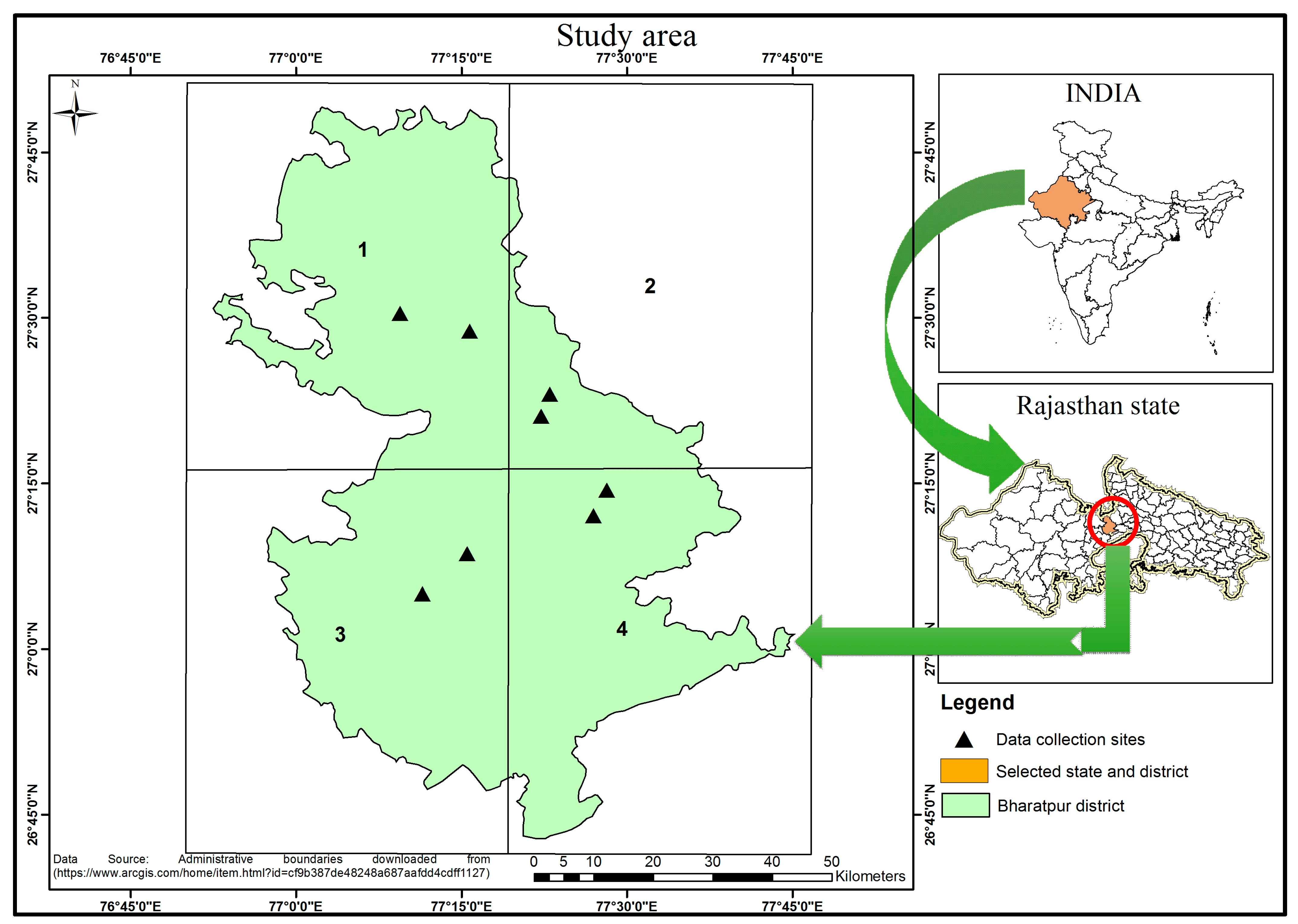
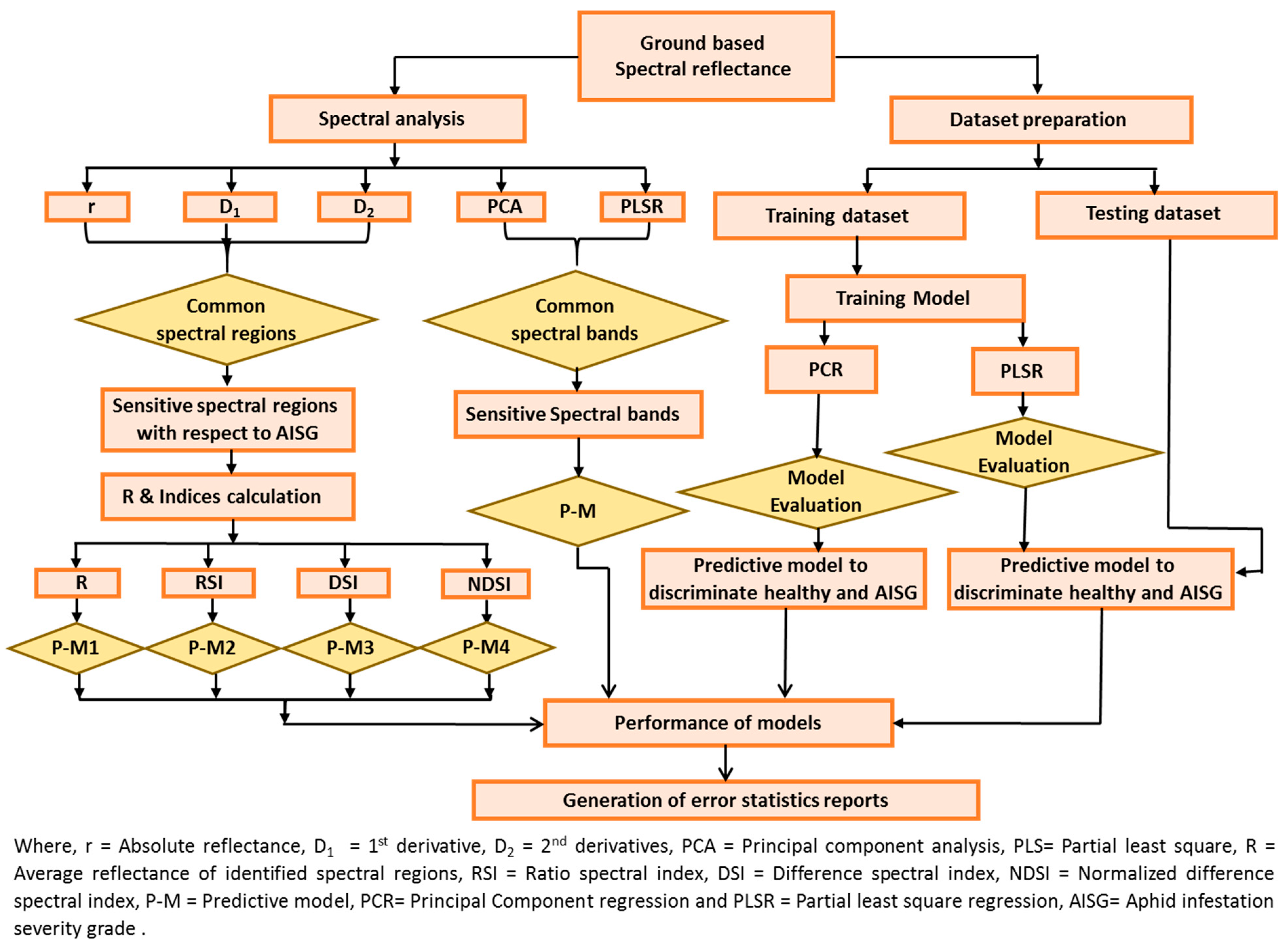

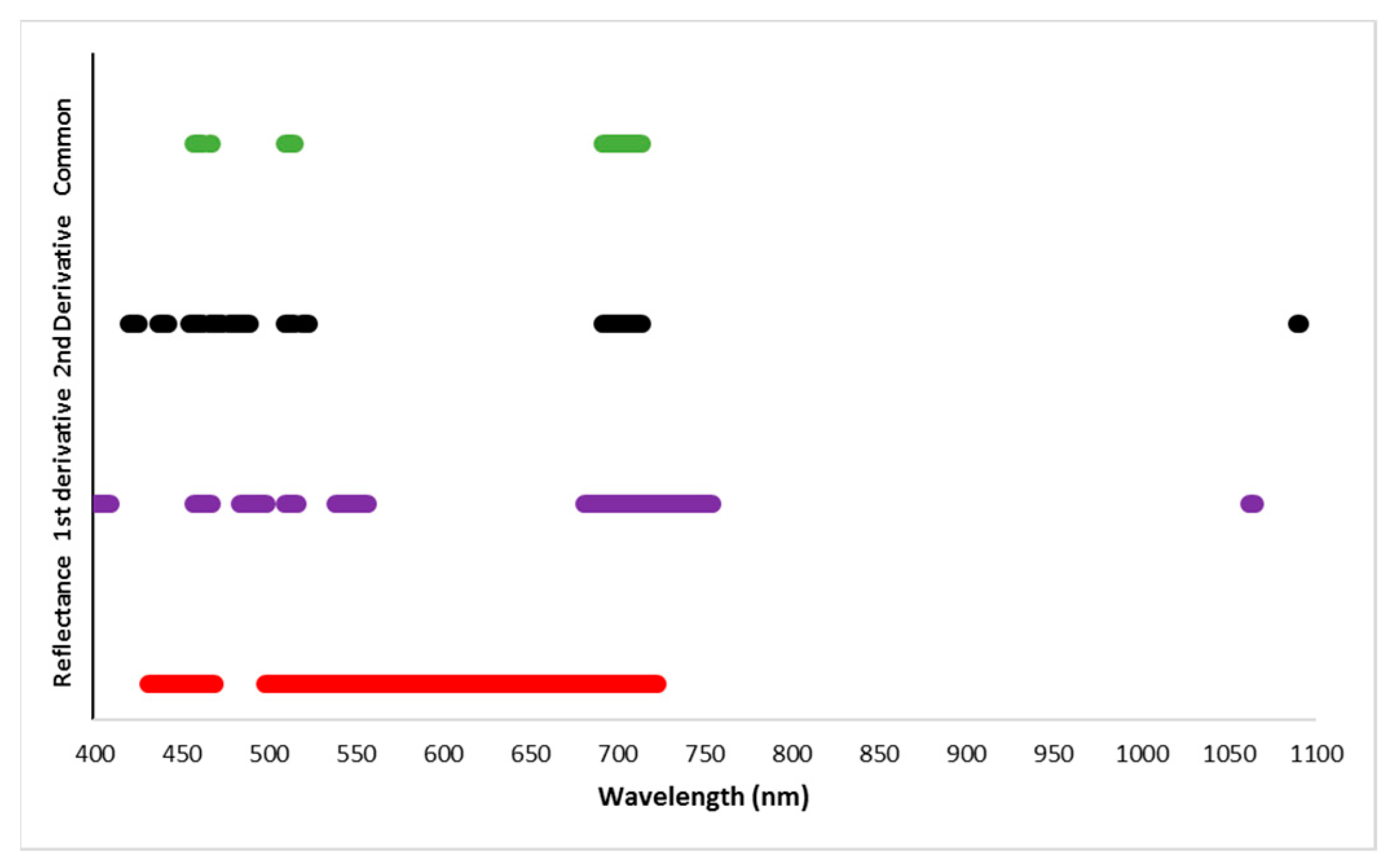
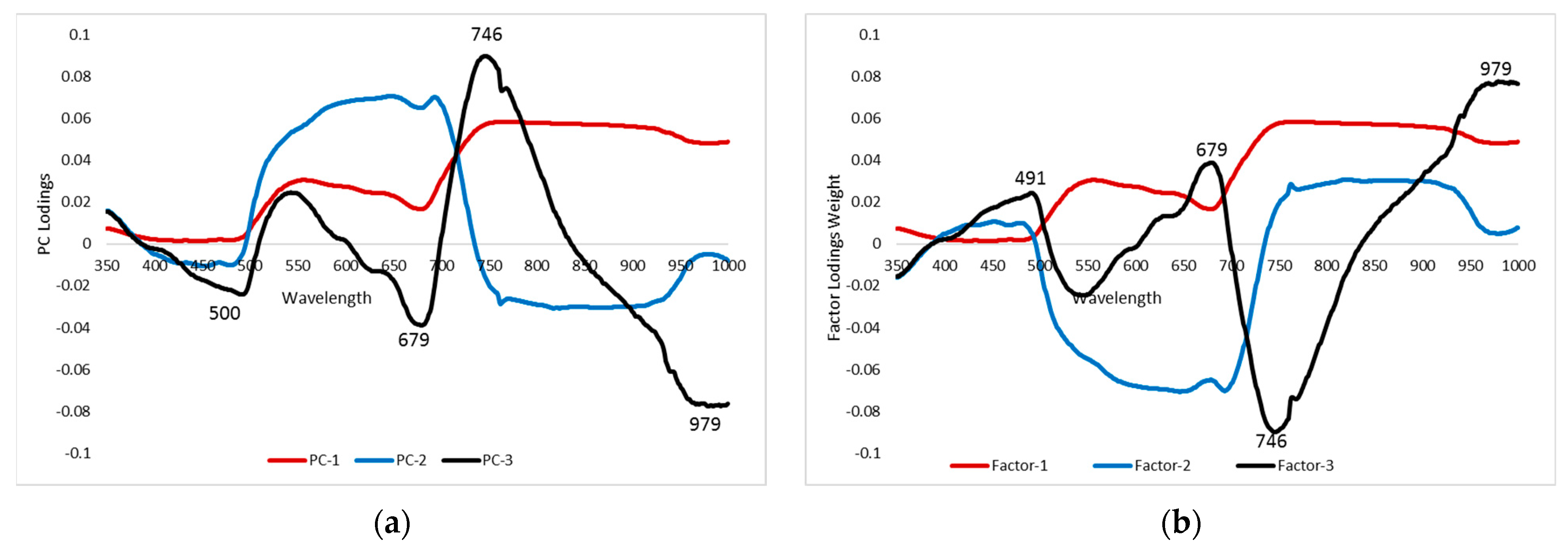
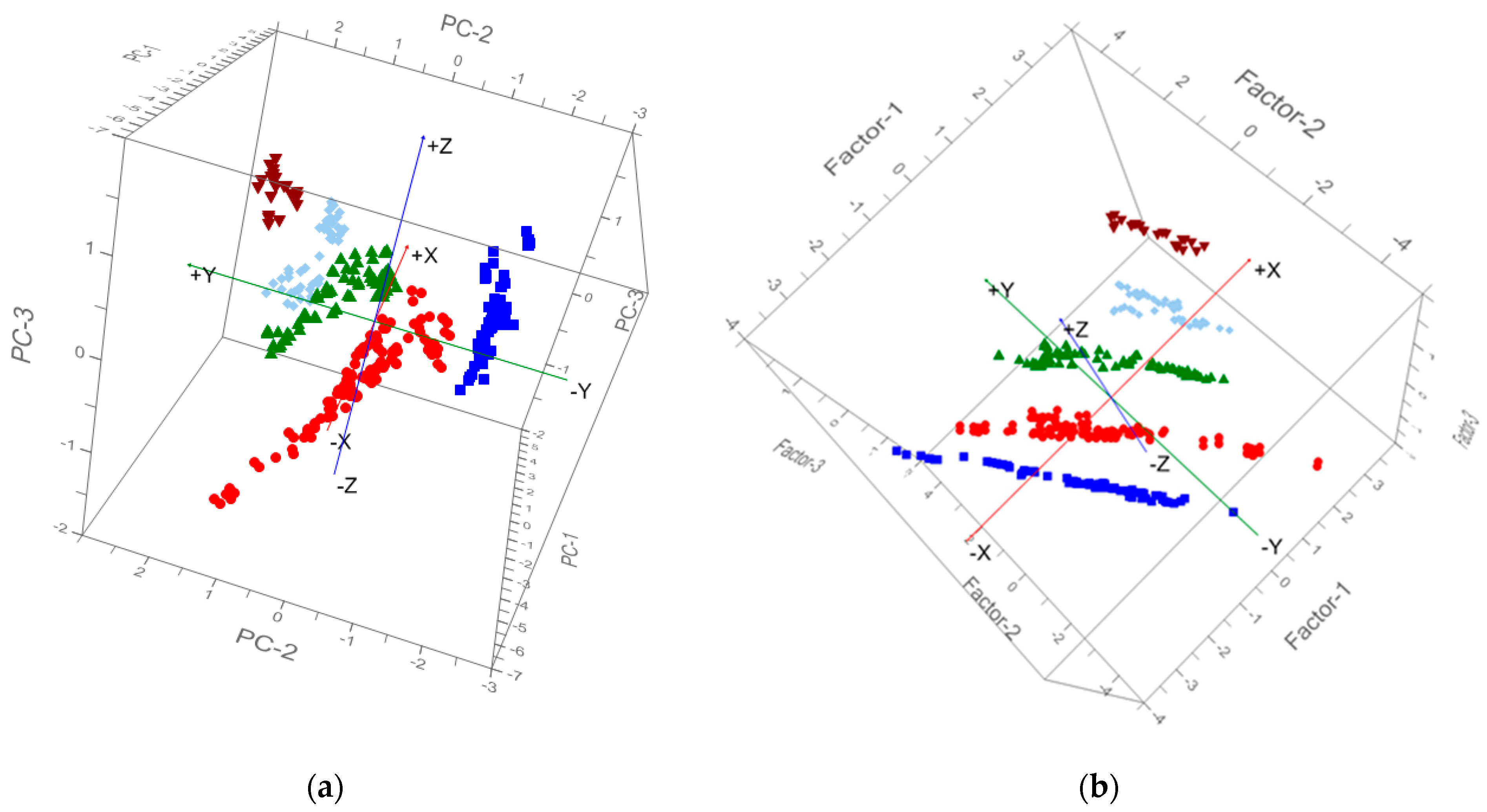
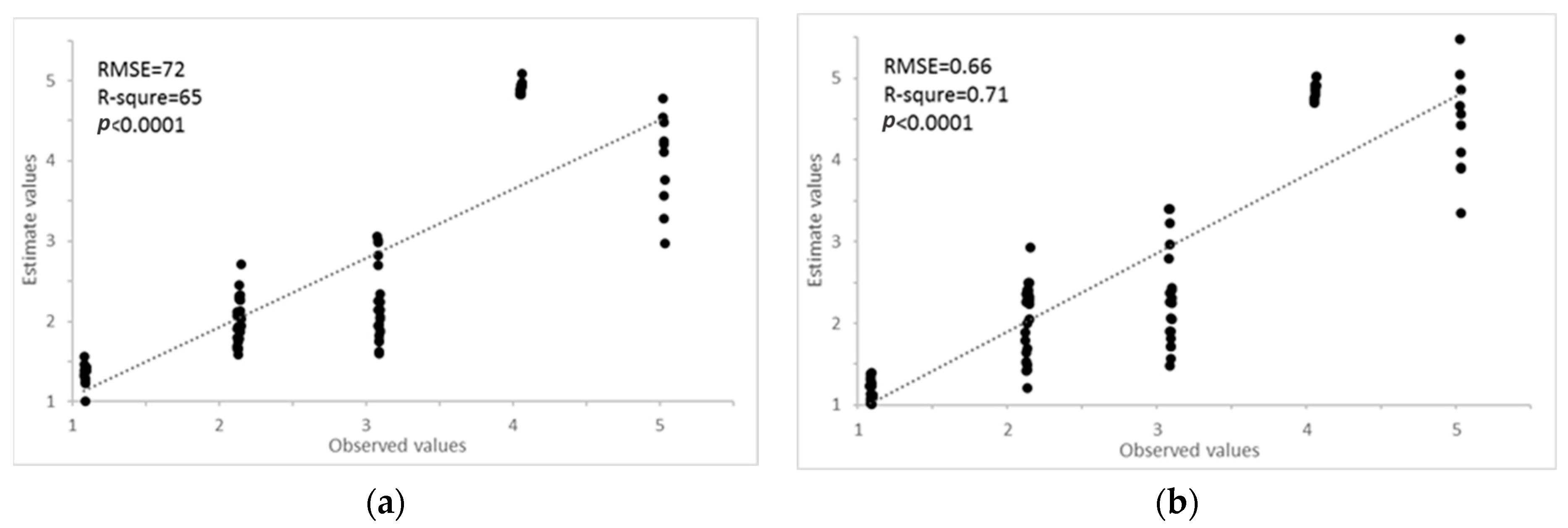
| Site No. | Latitude and Longitude | Date of Measurement | Date of Sowing | Age of Crop/Phenological Stage |
|---|---|---|---|---|
| Site 1 | 27.20 N, 77.45 E | 5 February 2017 | 31 October 2016 | 95 days/Ripening |
| Site 2 | 27.35 N, 77.37 E | 9 February 2017 | 7 November 2016 | 92 days/Ripening |
| Site 3 | 27.25 N, 77.46 E | 18 January 2017 | 7 November 2016 | 75 days/Ripening |
| Site 4 | 27.48 N, 77.26 E | 5 December 2017 | 21 October 2016 | 45 days/Inflorescence emergence |
| Site 5 | 27.50 N, 77.15 E | 31 January 2018 | 30 November 2017 | 60 days/Flowering |
| Site 6 | 27.08 N, 77.19 E | 22 January 2018 | 22 October 2017 | 60 days/Flowering and ripening |
| Site 7 | 27.23 N, 77.47 E | 31 January 2018 | 26 October 2017 | 95 days/Ripening |
| Site 8 | 27.47 N, 77.28 E | 5 December 2017 | 21 October 2016 | 45 days/Inflorescence emergence |
| Severity Grade | Infestation Severity | Aphids/Plant | Plant Part Damage Characteristics |
|---|---|---|---|
| 1 | No infestation (Healthy)  | Nil | No aphid infestation plant manifests excellent growth. Albeit a single aphid was found on tender parts of the plant viewed as infested |
| 2 | Initial | 0–25 | Yellowing of older leaves |
| 25–50 | Average growth of the plant, leaf form got curls, and yellowing of a couple of leaves average flowering and pod setting on virtually all the twigs. A few aphid colonies were found on a couple of twigs and topical shoots | ||
| 3 | Low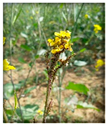 | 25–50 | Less than average growth, yellowing and curling of leaves on few twigs. Plant appears slight stunted with a smaller number of flowering and little pod setting |
| 50–75 | Plant growth normal, leaf yellowing and shape became curls of older leaves, normal flowering and pod setting on almost all the branches | ||
| 4 | Moderate | 50–75 | Plant growth very poor, large number of curling and yellowing leaves. Plant appears moderate stunted, minimal flowering, and only a few pods formed |
| 75–100 | Growth less than average. Plant appears slightly stunted with yellowing and curling of young and older leaves | ||
| 5 | Severe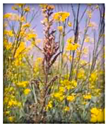 | 75–100 | Plant growth was very weakened and stunted. Despite the abundant number of curling and yellowing of the leaves, only a few flowerings and pods setting. Outnumbering aphid population on plants. Maximum of stems and leaves surface are hidden with sooty mold, no flowering, no pod formation |
| >100 | Heavy infestation damaged plant growth becomes a virtually stunted condition, curling leaf manifest crackling, and yellowing of virtually all the leaves. No flowering and pod development at all and plant ample of aphid. |
| Model | Method | Evaluation Factor | Input Factors | ||||
|---|---|---|---|---|---|---|---|
| R | RSI | DSI | NDSI | r | |||
| Linear Regression Model | Linear, Interactions and Robust | Not applicable | |||||
| Stepwise Linear | RMSE | 0.74 | 0.69 | 0.83 | 0.79 | 0.84 | |
| R Square | 0.62 | 0.67 | 0.53 | 0.57 | 0.51 | ||
| Regression Tree | Fine tree | RMSE | 1.2 | 1.2 | 1.20 | 1.20 | 1.2 |
| R Square | 0 | 0 | 0 | 0 | 0 | ||
| Medium tree | RMSE | 1.2 | 1.2 | 1.20 | 1.20 | 1.2 | |
| R Square | 0 | 0 | 0 | 0 | 0 | ||
| Coarse tree | RMSE | 1.2 | 1.2 | 1.20 | 1.20 | 1.2 | |
| R Square | 0 | 0 | 0 | 0 | 0 | ||
| Support Vector machine | Linear, Quadratic, Cubic, Fine Gaussian, Medium Gaussian and Coarse Gaussian | Not applicable | |||||
| Ensemble Tree | Boosted Trees | RMSE | 1.2 | 1.2 | 1.21 | 1.21 | |
| R Square | 0.01 | 0 | 0 | 0 | |||
| Bagged Trees | RMSE | 0.88 | 0.85 | 0.92 | 0.84 | ||
| R Square | 0.46 | 0.49 | 0.42 | 0.51 | |||
| Gaussian Process regression | Squared Exponential GPR | Not applicable | |||||
| Matern 5/2 GPR | RMSE | 1.2 | 1.2 | 1.2 | 1.2 | 1.2 | |
| R Square | 0 | 0 | 0 | 0 | 0 | ||
| Exponential GPR | RMSE | 1.79 | 1.78 | 1.34 | 1.63 | 1.5 | |
| R Square | 0 | 0 | 0 | 0 | 0.01 | ||
| Rational Quadratic GPR | Not applicable | ||||||
| Methods | Spectral Region/Band |
|---|---|
| Reflectance | 431–469, 498–723 |
| 1st Derivative | 400–409, 457–467, 483–500, 509–516, 538–557, 681–754, 1062–1065 |
| 2nd Derivative | 420–425, 437–442, 454–462, 466–474, 477–489, 509–515, 519–523, 690–714, 1089–1091 |
| Common | 483–487, 509–515, 690–714, 719–723 |
| PCA | 500, 679, 746, 979 |
| PLSR | 491, 679, 746, 979 |
| Common | 500, 679, 746, 979 |
| PCS/Factors | PLS | PCA | ||||||
|---|---|---|---|---|---|---|---|---|
| Model Effect (%) | Prediction (%) | Model Effect (%) | Prediction (%) | |||||
| Individual | Cumulative | Individual | Cumulative | Individual | Cumulative | Individual | Cumulative | |
| 1 | 88.41 | 88.41 | 88.22 | 88.22 | 85.98 | 85.98 | 85.79 | 85.79 |
| 2 | 10.02 | 98.43 | 10.40 | 98.40 | 12.26 | 98.24 | 12.42 | 98.21 |
| 3 | 1.10 | 99.53 | 1.12 | 99.52 | 1.29 | 99.53 | 1.30 | 99.51 |
| 4 | 0.16 | 99.69 | 0.14 | 99.68 | 0.14 | 99.67 | 0.14 | 99.65 |
| 5 | 0.12 | 99.81 | 0.12 | 99.80 | 0.10 | 99.77 | 0.11 | 99.76 |
| 6 | 0.09 | 99.89 | 0.09 | 99.89 | 0.07 | 99.84 | 0.07 | 99.83 |
| 7 | 0.05 | 99.94 | 0.03 | 99.93 | 0.07 | 99.91 | 0.07 | 99.90 |
| Evaluating Factors | PCA | PLSR | ||
|---|---|---|---|---|
| Training | Validation | Training | Validation | |
| RMSE | 0.78 | 0.72 | 0.72 | 0.66 |
| R square | 0.56 | 0.65 | 0.62 | 0.71 |
Disclaimer/Publisher’s Note: The statements, opinions and data contained in all publications are solely those of the individual author(s) and contributor(s) and not of MDPI and/or the editor(s). MDPI and/or the editor(s) disclaim responsibility for any injury to people or property resulting from any ideas, methods, instructions or products referred to in the content. |
© 2023 by the authors. Licensee MDPI, Basel, Switzerland. This article is an open access article distributed under the terms and conditions of the Creative Commons Attribution (CC BY) license (https://creativecommons.org/licenses/by/4.0/).
Share and Cite
Shukla, K.K.; Nigam, R.; Birah, A.; Kanojia, A.K.; Kumar, A.; Bhattacharya, B.K.; Chander, S. Detection of Aphid-Infested Mustard Crop Using Ground Spectroscopy. Remote Sens. 2024, 16, 47. https://doi.org/10.3390/rs16010047
Shukla KK, Nigam R, Birah A, Kanojia AK, Kumar A, Bhattacharya BK, Chander S. Detection of Aphid-Infested Mustard Crop Using Ground Spectroscopy. Remote Sensing. 2024; 16(1):47. https://doi.org/10.3390/rs16010047
Chicago/Turabian StyleShukla, Karunesh K., Rahul Nigam, Ajanta Birah, A. K. Kanojia, Anoop Kumar, Bimal K. Bhattacharya, and Subhash Chander. 2024. "Detection of Aphid-Infested Mustard Crop Using Ground Spectroscopy" Remote Sensing 16, no. 1: 47. https://doi.org/10.3390/rs16010047
APA StyleShukla, K. K., Nigam, R., Birah, A., Kanojia, A. K., Kumar, A., Bhattacharya, B. K., & Chander, S. (2024). Detection of Aphid-Infested Mustard Crop Using Ground Spectroscopy. Remote Sensing, 16(1), 47. https://doi.org/10.3390/rs16010047












